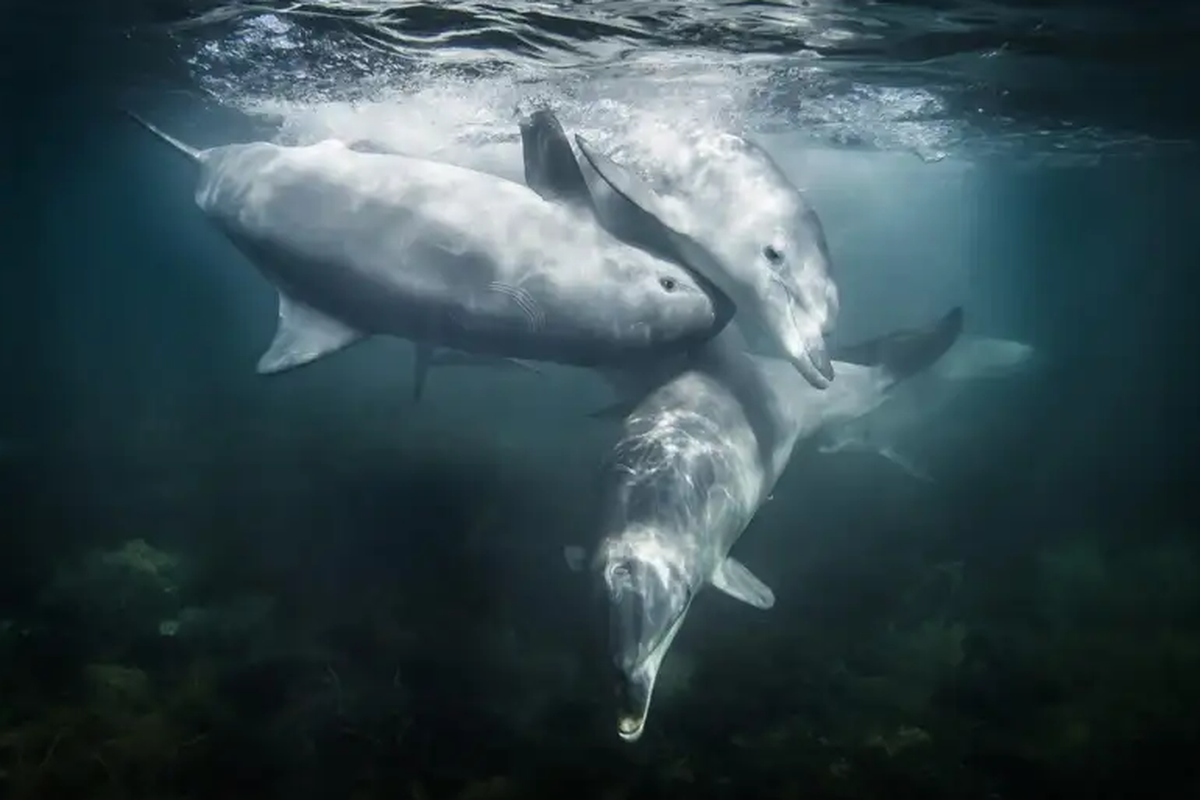Rescued Dolphins Swim Free from Indonesia Sanctuary

TOKYO, KOMPAS.com — Three bottlenose dolphins were released into the open sea in Indonesia Saturday, Sept.3, after years of being confined for the amusement of tourists who would touch and swim with them.
As red and white Indonesian flags fluttered, underwater gates opened off the island of Bali to allow Johnny, Rocky, and Rambo to swim free.
The trio were rescued three years ago from their tiny pool in a resort hotel to which they had been sold after spending years performing in a traveling circus.
They regained their health and strength at the Bali sanctuary, a floating pen in a bay that provided a gentler, more natural environment.
Lincoln O’Barry, who worked with the Indonesian government to set up the Umah Lumba Rehabilitation, Release, and Retirement Center, said dolphins are wild animals that should live free.
Also read: Animals Gone Wild: Orangutan Evacuated after Entering Village in East Kalimantan, Indonesia
“It was an incredibly emotional experience to see them go,” O’Barrry said.
The center was initiated in 2019 by the Bali Forestry Department and the Indonesian Ministry of Forestry. “Umah lumba” means “dolphin” in Indonesian.
For some time after the gates opened, the dolphins looked at the opening, uncertain of their next move. But after about an hour, they were on their way, sometimes jumping over choppy waves.
The Associated Press watched their release through an online livestream. O’Barry is documenting the release with drones and underwater footage for a film.
The Indonesian government supported the dolphins’ rescue, working with Dolphin Project, founded by Lincoln’s father Ric O’Barry, who was also at the release.
Ric O’Barry had been the dolphin trainer for the 1960s TV show “Flipper,” but later came to see the toll exacted on the animals. He has since devoted his life to returning dolphins to the wild.
Center workers clapped as the dolphins swam out. Wahyu Lestari, the rehabilitation coordinator at the center, said she was a bit sad to see them go.
“I’m happy they are free, and they are going back to their family,” she said. “They should be in the wild because they are born in the wild.”
The freed dolphins will be monitored out at sea with GPS tracking for a year. They can return for visits to the sanctuary, although it’s unclear what they will do. They may join another pod, stay together, or go their separate ways.































